When Bring Me The Horizon got their first big break – a European tour with Killswitch Engage in 2007 – Lee Malia took his first proper guitar, a Jackson Warrior, along with him. As the band transitioned from deathcore advocates to arena fillers, he turned away from Jackson when endorsement offers started arriving.
“When you’re young and you’ve got no money, it’s quite handy,” he observes. Epiphone gave him his first signature series in 2017, but when his contract ran out he embraced his newfound freedom. A Rhoads V was top of his list.
Now Jackson have created a beautiful full-circle moment in the form of Malia’s Pro Series LM-87 signature guitar. Building on the offset trend fuelled by Spiritbox’s Mike Stringer and Periphery’s Misha Mansoor, it’s a unique addition to Jackson’s arsenal of metal machines.
It looks like a vintage, Jazzmaster-inspired relic, plays like a Gibson-Jackson hybrid, and it’s dripping in modern accoutrements that belie its old-school looks – all for $899.
When did you get your first Jackson?
“When the band started around 2004, I’d go to guitar shops in Sheffield with my dad to look around. One day we saw the Jackson Warrior and we were both like, ‘That’s amazing!’
“He wasn’t meant to buy me a guitar that day, but he loved it as well. So he rang my mum, like, ‘I’m gonna have to get it.’ I was about 15 and I loved it.”
Were there any must-have specs for your new model?
“I wanted something different from the usual Jackson. I looked online to see what customs had already been made and I saw a Firebird shape with a reverse pointed headstock. It’s one of the nicest guitars I’ve ever seen – but we didn’t want Gibson to sue us!
“Then I found an old Charvel Surfcaster and I knew I could make something really cool with it. Jackson brought it to life.”
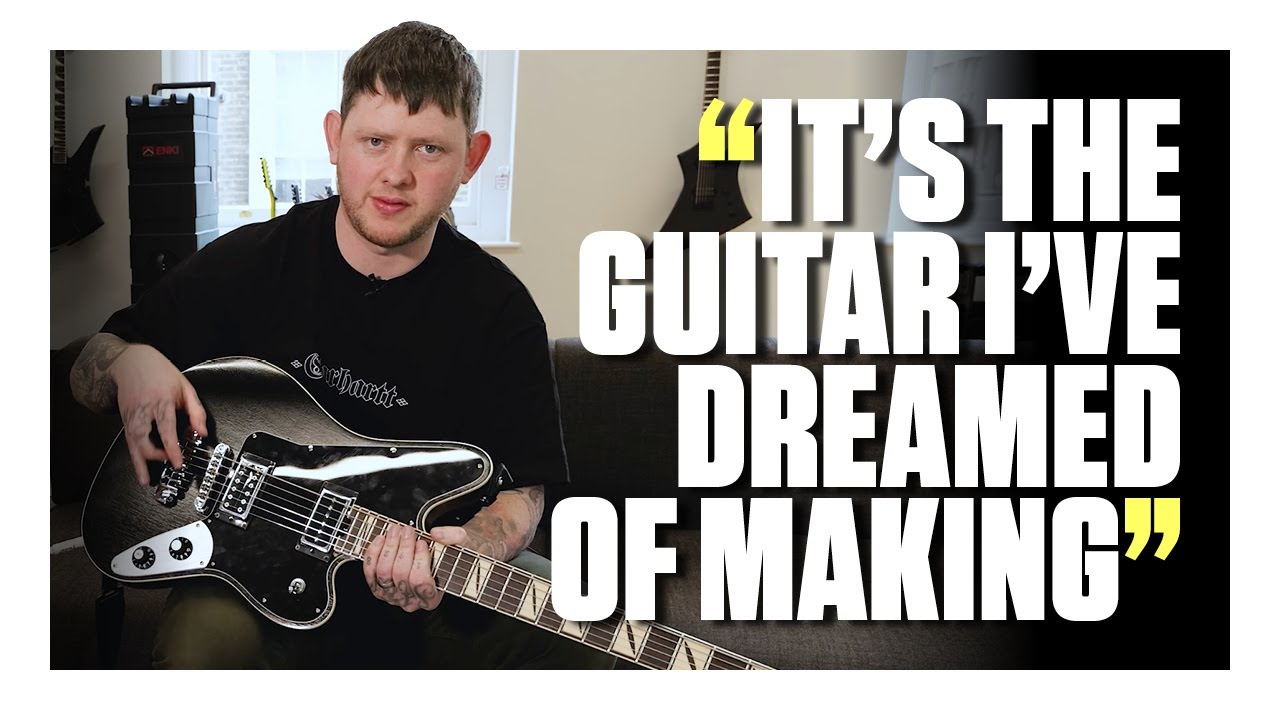
It seems to play and feel like a Les Paul.
“I suppose it does; with the set neck, the P-90 and not super-hot pickups. I guess you could say it’s like a Jackson-Gibson kind of thing.
“All the guitars I’ve bought recently have been from the ’70s and early ’80s – I really like that old school relic’d vibe. With the open-pore finish, it’ll wear a lot quicker than normal guitars to get that relic’d look. Everyone’s will look different. But it’s still a modern guitar – you can play whatever you want on it. It can do everything.”
The LM-87 pickups are custom-voiced. What was the vision for them?
“We based it on the pickups from my Epiphone signatures, but we’ve modernized them. We went backwards and forwards on it a few times, because I love pickups to sound really open, and I almost feel like the more gain in them, the more they compress. It was finding the right balance.
“The first one they sent was driving stuff too much; I was losing clarity. I knew they got it right the third time because they were so excited when they sent it to me. They’ve got a really good midrange attack. When you strum chords with gain, you hear everything – it doesn’t crap out.”
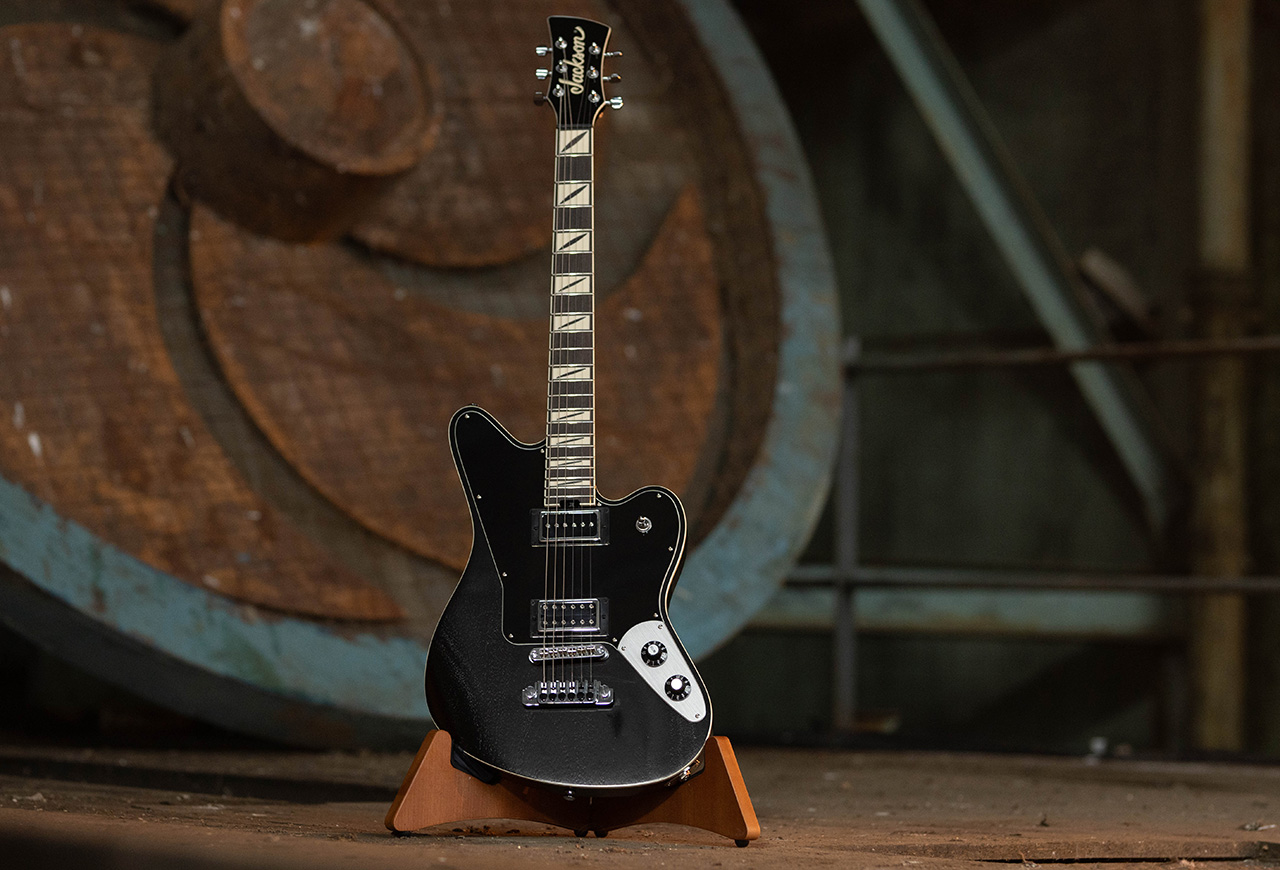
In your setup, do you tend to push your pickups?
“Before I moved over to Quad Cortex, I was using a Marshall JCM800 with a Klon-style overdrive. So it’s all pretty normal; it’s got gain, but I feel like you get more from it. I like the aggression. It’s so in-your-face because there’s not so much gain it’s fizzing up or over-saturating.
“I’m still using a modern Marshall that I’ve captured with a Klon, so it’s still that sound. It’s heavy with a higher-mid focus.”
The Epiphone wasn’t actually that comfortable to play live, but I didn’t know until I toured it
And there’s a P-90 in the neck.
“I never really use my neck pickup for gain. When you put it in the middle position with the coil split, it’s such a nice clean sound. If you use it with gain, it doesn’t get too muddy because there’s much less bottom-end. That’s where it can get a bit muffled with a humbucker.”
The offset is having a renaissance in metal at the moment. Why do you think that is?
“I guess it’s just because the shape’s not as common. Spiritbox are super-heavy; It’s not as common to see a band like that playing offsets. And I find them really comfortable to play.
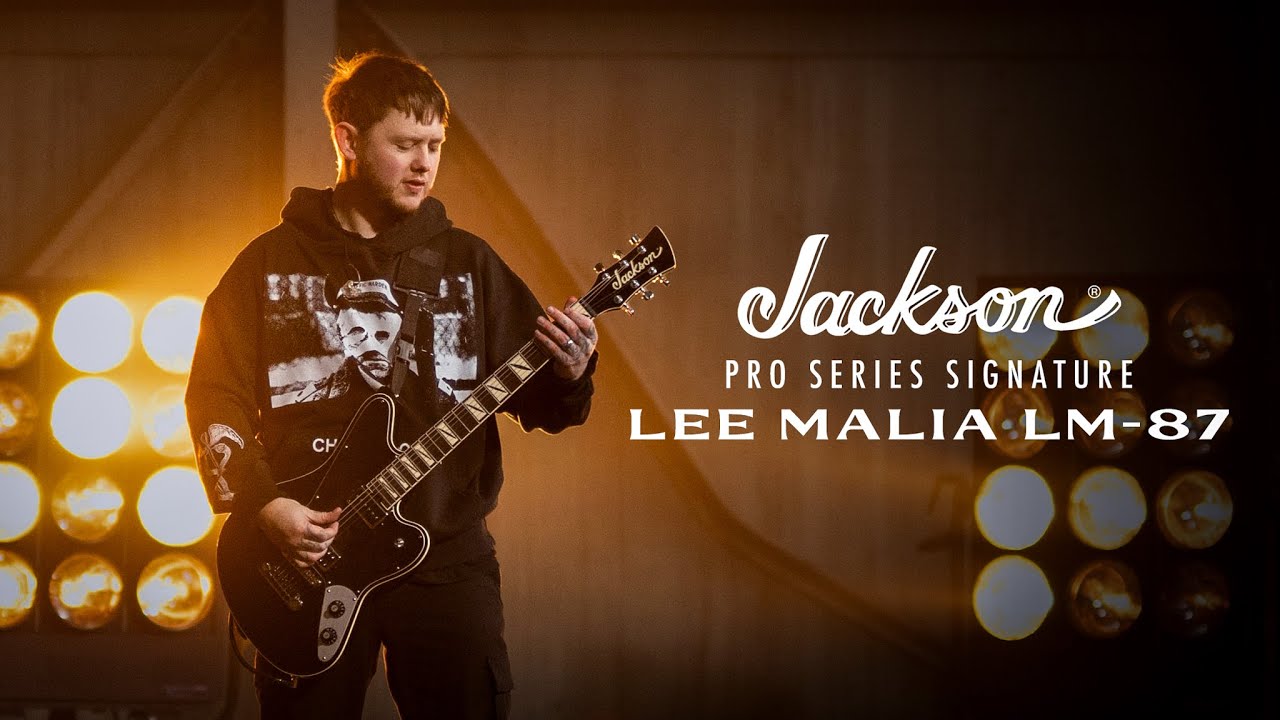
“After I made the RD with Epiphone I found it wasn’t actually that comfortable to play live, but I didn’t know until I toured it. They didn’t sit right. But with this – the cut for the arm and everything – it just works straight away.”
And you’re really tapping into the modern-vintage trend.
“I think it’s just a progression as I’ve gotten older. When I was 15 it was pointy guitars you could shred on. Now it’s old Gibsons and ’80s Jacksons where they’re all weathered. I love the retro look.
“But then you’ve got the fine tuners, locking tuners, and access to the truss rod at the top of the neck. I don’t have to worry about over-tuning and then having to stretch my string back out.”
How much has the guitar changed since the first prototype?
“It’s lighter than the prototypes. Now we’re headlining festivals, we’re often playing for nearly two hours, so lighter guitars are so relieving!
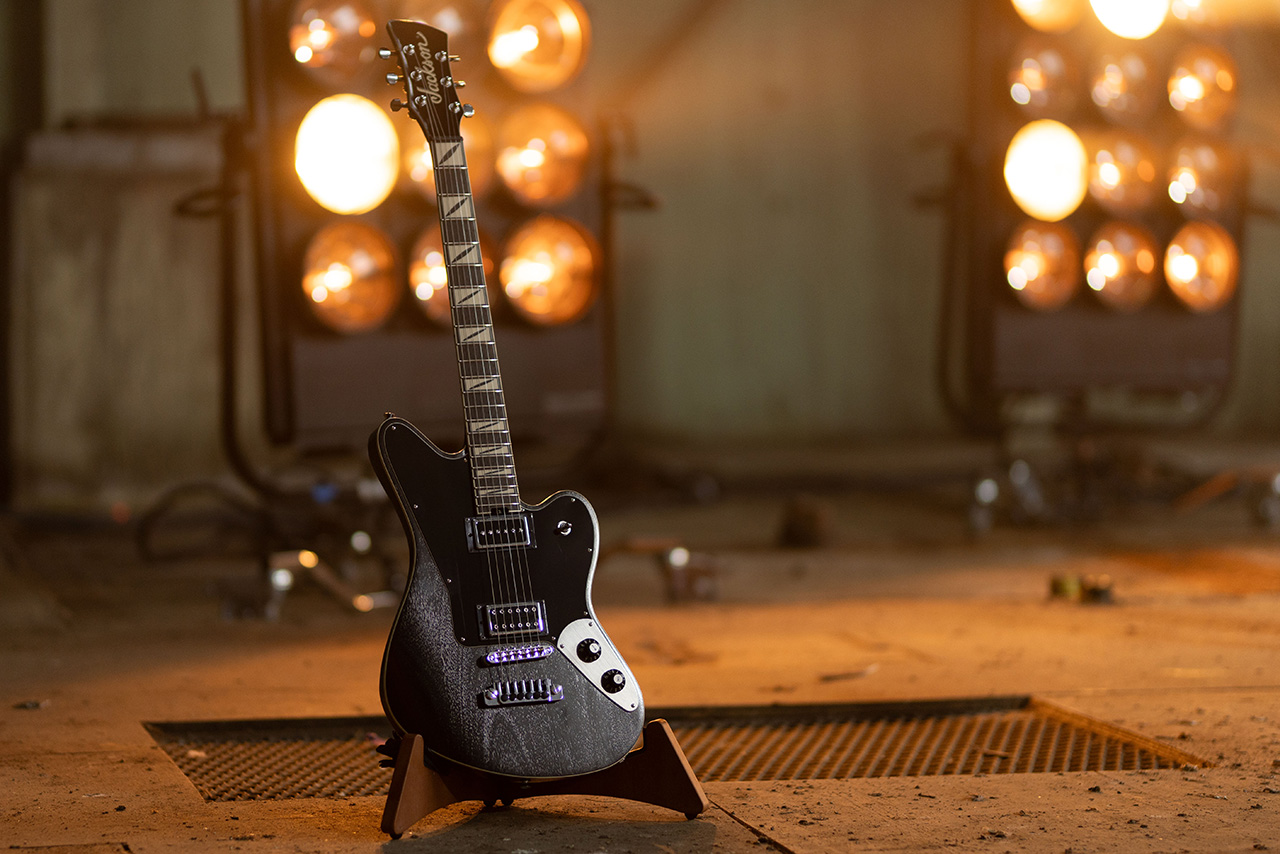
“I used to have this thing about weighing my guitars and using the heaviest one, because for some reason I thought I played better when it felt heavier – like I could lay into it more or whatever. As I’ve got a bit older and my back’s got worse, the lighter guitars are definitely better.
“We had Luminlays and a few other bits, but we took them out to keep it under $1,000. The pickup selector is plastic and it’s all Jackson hardware. Top-quality stuff, but it keeps the guitar at a good price point. There’s no point making it if no-one can buy it.”
What role does it play live?
“Basically, I’ve been playing three: two prototypes and a production model. We’ve got, like, 20 different tunes for other sets – it’s a bit chaotic; everything from C standard to drop A – so I need a lot of guitars. There’s the odd song where I still might play a Strat for the single coils, but I can do any sound with this guitar.
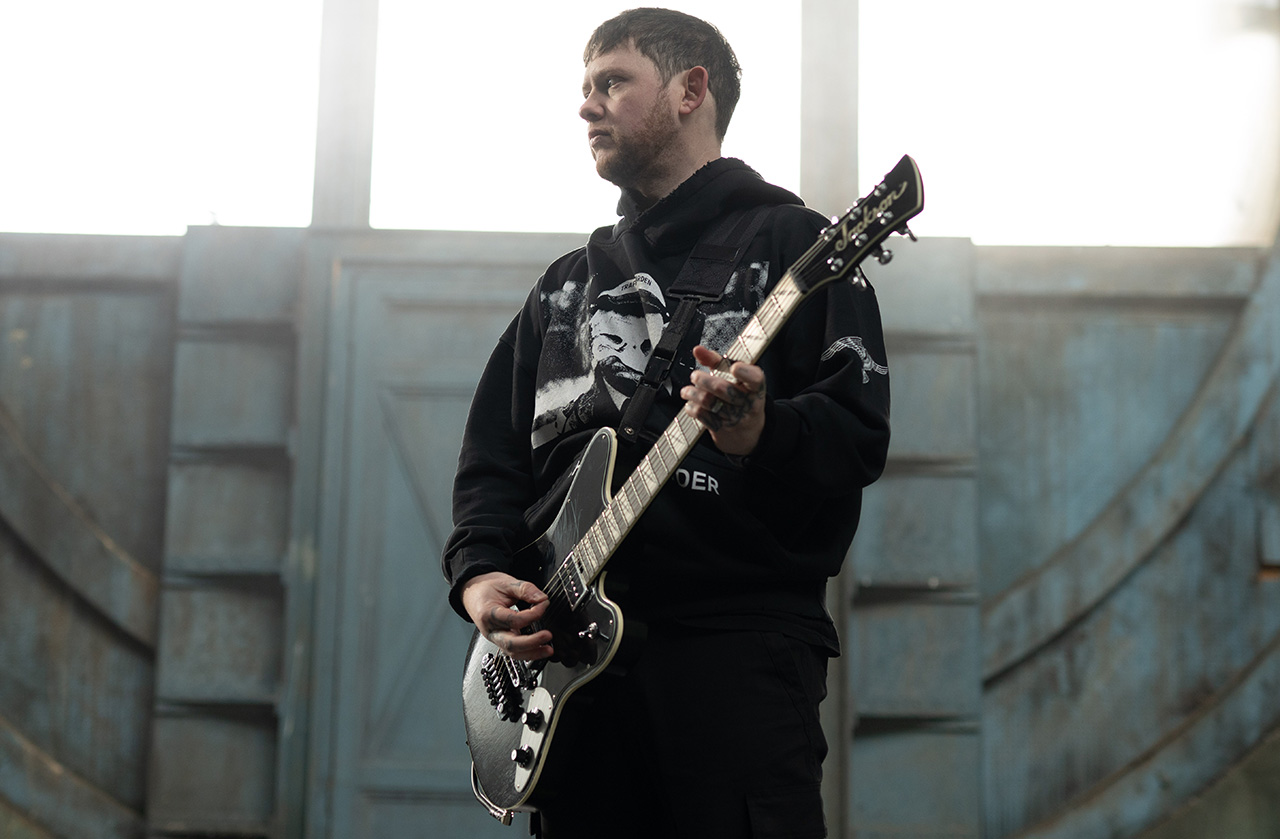
“I’m used to playing 80-gauge strings. When I got the production model the other day and it had 10s on, it felt insane. It was so fast! It just feels like a really good guitar to play. It’s my go-to at home now. As soon as I’ve got an idea, I grab it straight away; I know what it’s gonna sound like.
“Between interviews I have not stopped playing, because it’s just so fun. When something plays that easy and sounds great, you just want to sit and play it. I love it.”
GIPHY App Key not set. Please check settings